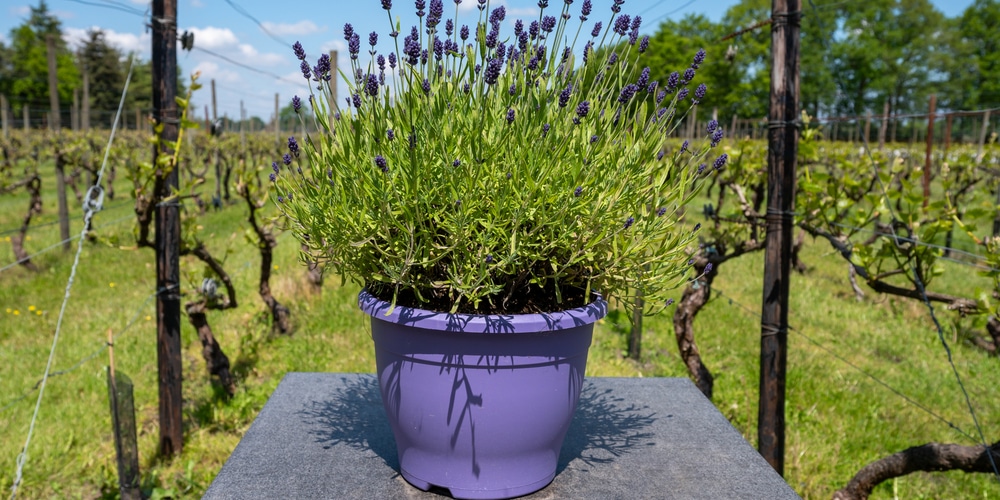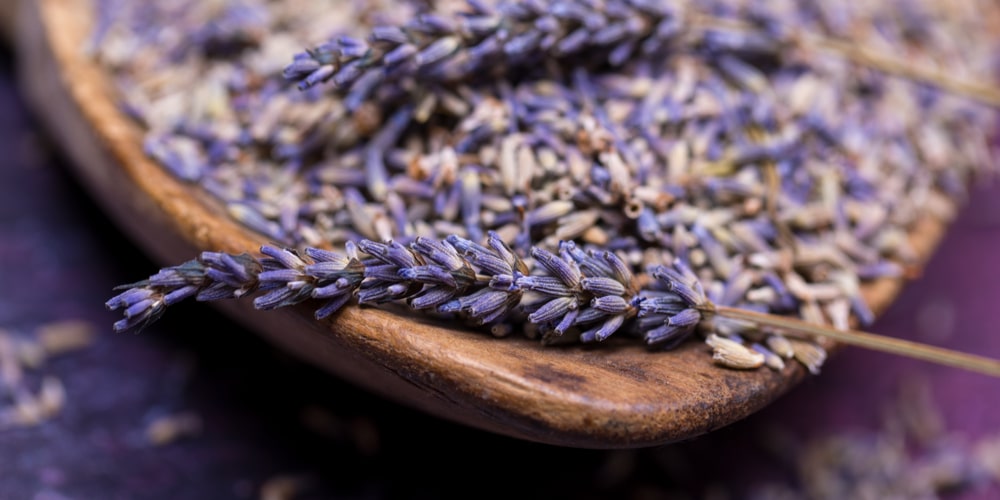If there is one herb you should consider adding to your garden, it should be lavender. Besides releasing a soothing scent, the plant also has a gorgeous appearance. It displays stunning purple flowers that will attract plenty of beneficial pollinators.
So, with lavender around, your garden will look lively and vibrant. Not surprisingly, this plant is an ideal companion plant.
Lavender is native to the Mediterranean. Not surprisingly, it prefers dry and hot weather. But knowing how much water it needs will make a considerable difference in your success.
You have landed in the right place to learn more about how much water lavender needs! Here, you’ll find all the information you need to create a watering schedule for your herb.
Why Should You Pay Attention to Your Watering Schedule?
Overall, lavender is a relatively low-maintenance plant. However, not following an adequate watering schedule might cause it to die before harvest time. Because of its native area, watering lavender can be slightly tricky (but don’t worry: it is nothing out of this world!)
The frequency at which you should water your herb depends on various factors. For instance, your region’s climate, the plant’s location, maturity, and the time of the year will affect it. Keep in mind that potted lavender tends to have different watering requirements than those in the soil.
Additionally, you might have to water your plant more often during the first months after planting. On the other hand, when the herb has gotten used to the environment (usually in about one year), it develops a high tolerance to drought.
So, it won’t need as much water as a young plant. Don’t forget to account for all such factors when deciding how often to water your lavender.
Jump to the following section to have a clear idea about creating the ideal watering schedule for your lavender.
How Much Water Does Your Lavender Need?
You must provide your herb with generous amounts of water. Indeed, thorough watering, especially during the growing phase, will encourage root development and a better plant establishment.
On the other hand, not giving enough water to your lavender might cause its roots to grow closer to the surface. In turn, this might result in limited access to water and nutrients. In the long run, such a situation might cause halted growth and make your plant more susceptible to diseases.
Finally, don’t forget to plant your lavender in well-draining soil. You can amend your substrate or add a layer of mulch to improve drainage and water retention (and prevent sogginess).
How Often Should You Plant Lavender?
Water your newly planted lavender once or twice per week. Doing so will minimize the shock that might result from transplanting and adaptation. But remember: it might take some time before your lavender roots establish themselves in the new environment.
Also, pay attention to the local climate. If it has rained for a while and the soil feels moist, wait for a couple of days before adding extra moisture.
If you decide to plant your lavender in a container, keep in mind that potted plants tend to be more demanding. Indeed, potted plants usually dry faster than other plants.
For this reason, potted lavender needs more water and, on average, requires additional moisture every two weeks. Still, if the weather is hot, you might have to increase the watering frequency.
However, don’t overwater your plants: too much water might cause fungal infections and rot. In general, less is better with lavender, even when in containers.
Alternatively, if you planted your lavender directly on the ground, watering it every two to three weeks might be enough. Don’t forget to always feel the soil with your fingers before adding any extra moisture: wait for it to dry to avoid sogginess.
Also, consider adding a thick layer of mulch around your plants. Doing so will improve water retention and protect your plants from thermal shock, which might come in handy during hot summers or if you live in a colder region.
Amending the soil with sand to increase porosity is also a good idea to keep your plant healthy.
How much water does lavender need: Conclusion
Finally, reduce the watering frequency during the winter, when lavender plants go into dormancy and don’t need as much moisture.
Related Article: Can Lavender Grow in Clay Soil?



